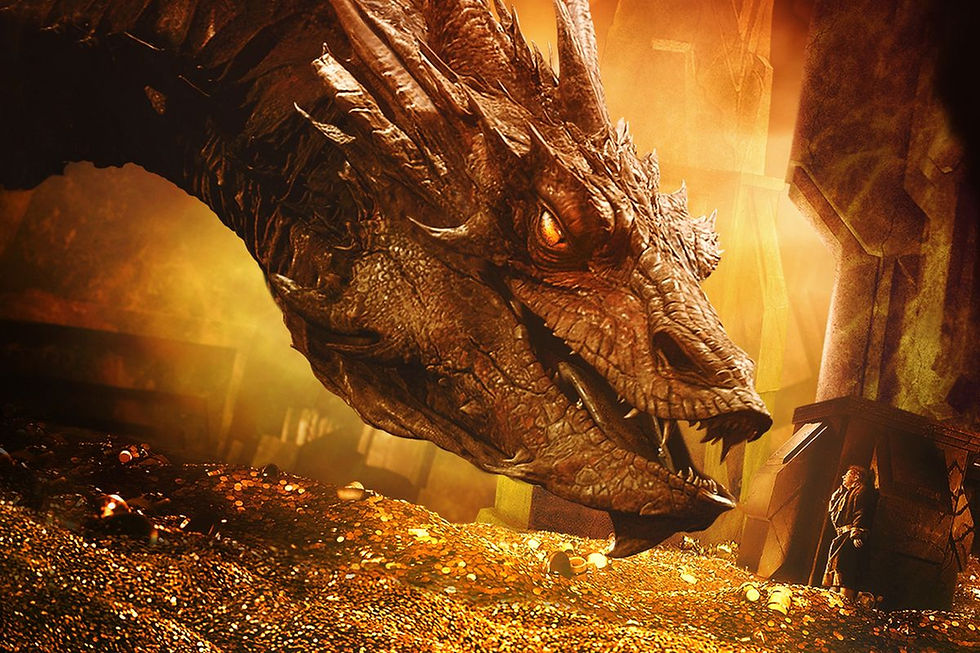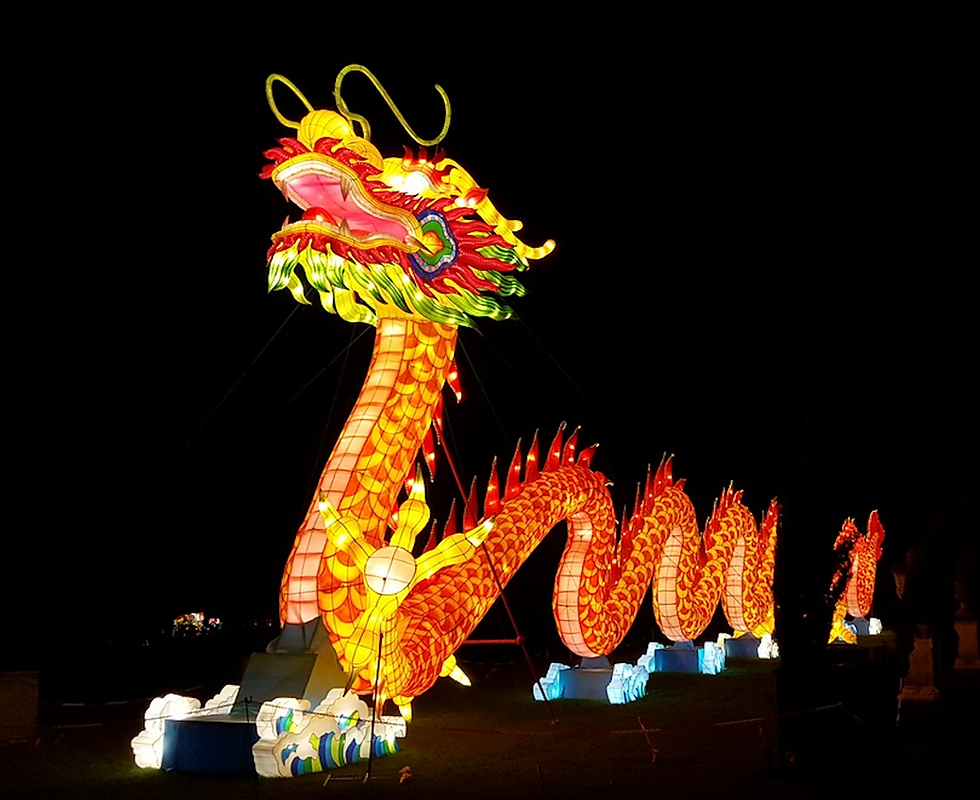A history of dragons in jewelry
- Valerie Bound

- Jan 16, 2024
- 4 min read
I bet you didn’t know that today is Appreciate a Dragon Day! Yes, indeed, every January 16th has been decreed (by who, I wonder?) to “encourage you to explore the cultural significance of the dragon in your society and history!” And so I will. But with a focus on jewelry, of course.
What is a dragon anyway?
Since dragons aren’t real, it seems a little silly to talk about what they are. But the creature who breathes fire and has wings and can fly is a really a more recent dragon. This one came about in the Middle Ages (approximately 1100s tp 1400’s). Think Game of Thrones, Middle Earth, etc. Or Puff the Magic Dragon. They like caves. And treasure. Sometimes they guard treasure.

But before the Middle Ages, dragons were essentially a big snake. Usually, sea snakes. Or sea monsters. Or sea serpents. Something scary.

Dragons from the East
I don’t know about you, but when it comes to dragons in jewelry, I tend to associate them with China. Like a lot of the images you see when they talk about the Year of the Dragon.

It turns out that Chinese dragons are pretty different from the typical Western fire-breathing meanie. First of all, they don’t have wings. Instead, they float or undulate through the air. And they’re nice. Playful. And typically red, which shows their energy and vitality. In Chinese culture, they’re linked to rain and water, and are a symbol of life, strength, and prosperity. Sometimes dragons are shown with a pearl in their claws or mouths. This symbolizes wealth, power, and opportunity.
Pretty cool, huh?
Ancient dragons in jewelry
This is one of the oldest pieces of dragon jewelry I found. It’s from three thousand years before Jesus. The pendant is Chinese jade. You can see it’s essentially a snake.

I also came across this dragon brooch from the eighth century. This was the era of the Vikings, and they loved dragons too. They were carved into the bows of their ships, so I suppose it’s only natural they made their way into jewelry.

I’m not sure why dragons, or the idea of them, go so far back in human history. Perhaps it’s because humans seem to have an innate fear of snakes. (Did you think it was just you? Nope.) Even in places where no snakes are around, people are afraid of them. That would explain why snakes and dragons are found in almost every single culture, all over the world.
Art Nouveau
The Art Nouveau period, from the late 1800’s to the early 1900’s, seems perfect for dragons. Art Nouveau was all about nature, and flowing lines. But it had plenty of fantastical elements, like dragons, women who had wings, and creatures who were half human and half animal. Not surprisingly, I found plenty of dragon pins in this era.

The dragons from this period could seem friendly or menacing, but the overwhelming feature was how curvy they were. Again, Art Nouveau is all about using flowing lines to create something unique.

Art Deco
Dragons also show up in the Art Deco time period. This was when the USA and Europe were absolutely fascinated with anything from China and Japan. We went crazy for cherry blossoms, dragons, lacquer, and other design elements. Art Deco is all about being sleek and white. Diamonds are prominent, as is platinum.
This bracelet is a good example of what I’m talking about.


Modern Dragons
Today, you can have a medieval looking dragon, a cute cuddly dragon, or a bearded dragon. You can have one that’s scary or not. There are bracelets, necklaces, earrings, and everything in between. Want to emulate Khalessi from Game of Thrones? They even have dragon jewelry inspired by the show!
Major jewelry houses have done dragon jewelry, like Cartier and Van Cleef & Arpels.




Bracelets with dragon’s heads seem pretty popular.

Now I’m a fan
I have to admit, before I did this post, I wasn’t a huge fan of dragons. But now, I have a new appreciation for them. I guess it goes to show there may be something to these quirky holidays after all!
What about you? Do you have any dragon jewelry? Do you want some now? Check out my Pinterest board for even more pretty dragons!


















Comments